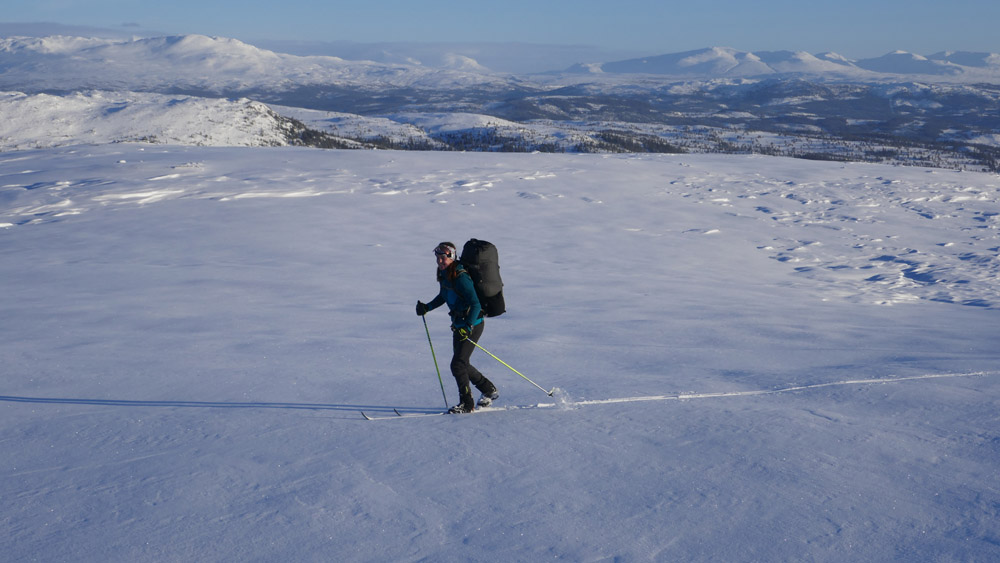WE TALK TO BRITISH MOUNTAIN GUIDE TANIA NOAKES ABOUT HER RECENT 2500KM SKI TRAVERSE OF NORWAY…
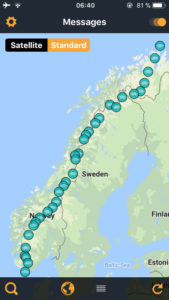
Tell us about the challenge you’ve just completed?
I skied the classic ‘Norge pa Langs’ which is a journey from one end of Norway to the other. It’s become a bit of a classic journey in summer and is often undertaken, but it remains a formidable challenge in winter and far fewer people do it – very few do it solo. I skied 2533km in 82 days and 566hrs of skiing, solo, unsupported and without the use of mechanical transport from the southern tip of Norway, Lindesnes lighthouse, to Norkapp, the most northerly point of mainland Europe.
How did the idea come about?
I’m passionate about cross-country (Nordic) skiing and as well as being a mountain guide I coach Nordic skiing during the winter. I used to race biathlon and cross country, and still do some recreational races. Norway is an amazing country for Nordic skiing; it’s very mountainous but there are often deep cut valleys and more gentle rolling terrain that allow passage through them on lighter cross-country touring equipment. It’s perfect for ski touring and a wild remote winter journey and I’ve made many trips there in the past. A friend of mine did this journey on skis as part of a team of two about 15 years ago. They had a different strategy to me and pulled sleds (pulks) and took much longer to complete the traverse. He has done a lot of very challenging ski journeys, in the Arctic and Antarctic, and he advised me that I simply had to do this journey at some stage in my life. It’s been a dream nurtured in me since then and finally I’ve been able to make it happen.
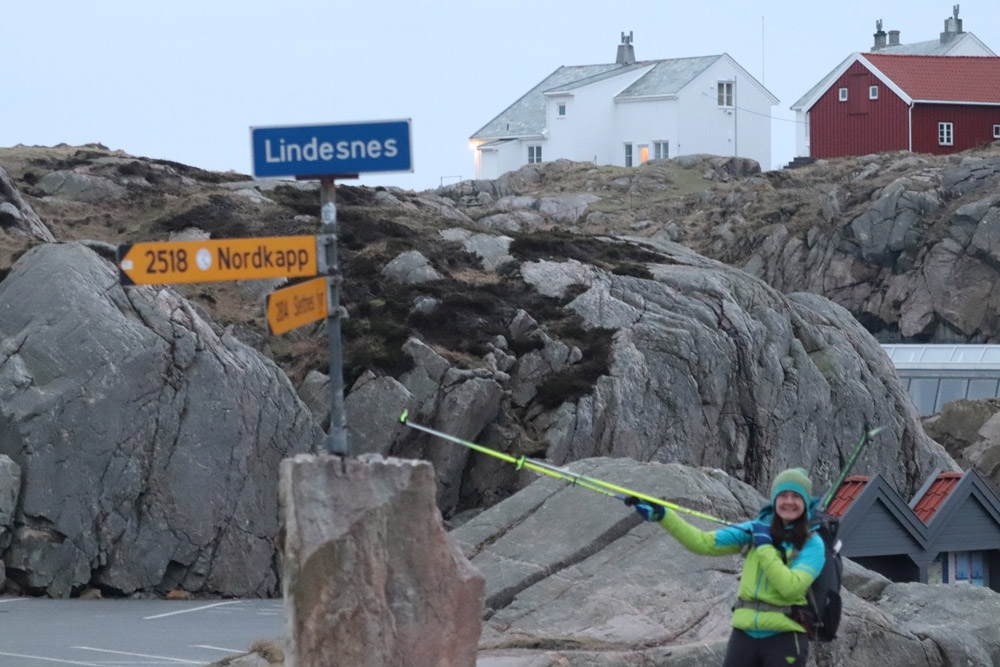
Setting off from Lindesnes in the far south of Norway
You were raising funds for the Ulysses Trust – what’s your connection with this charity?
The Ulysses Trust are a charity that provide a source of funding for Cadets and Reservists to undertake challenging adventurous training. I was in the Regular Army for five years before leaving to train to become and IFMGA Mountain guide. Since leaving I continued to work with the Army Reserves planning and leading adventurous training expeditions for young people in the Officer Training Corps at Universities. I have seen first hand the positive effect on character development that adventure in the outdoors can have, particularly with young people. They have supported many of the expeditions that I have organised for Reservists in the past and through my contact with them I became an ambassador for the trust last year. The money I am raising will go to their 25th Anniversary appeal which is specifically targeted at supporting the Cadets, so young people aged 12-18, where adventure training can have a very positive effect.
You’ve previously completed a traverse of the Alps on skis; how different was this challenge?
When I traversed the European Alps on skis I was working in my capacity as an IFMGA Mountain Guide. I had organised the expedition to create opportunities for Service personnel to be part of a challenging ski touring expedition. So I divided the journey into 11 stages and had six skiers join me on each ‘stage’; we also had a dedicated support vehicle and support team. That meant that I had a different approach and philosophy for the whole expedition – I was looking after my group and making decisions about the safety and capabilities of the group as a whole. So my own physical capacities were never really pushed, and the route we chose was a much more pragmatic affair. Where necessary we used lifts and our support vehicle to move us around sections which were too difficult given the prevailing snow or weather conditions matched against group capabilities. The aim was much more to challenge the participants, but not take on excessive risk, and also to ensure that each group enjoyed their stage and felt they were challenged but never overly so!
What kind of planning and training was required for your Norway traverse?
My work as a mountain guide always keeps me at a good level of fitness and in the early part of the winter I do a lot of cross country skiing coaching, so I’m fortunate that the natural progression of my work adequately prepared me for the trip. I also knew that by starting in the middle of January with only six hours of daylight that I wouldn’t be travelling big distances to start with. I planned to start steadily and gradually, with the lengthening days, increase the mileage and the hours on my skis. Fortunately this approach paid off and I found my body physically coped well with the challenge. I skied so hard in tough conditions at the end, though, that when I finished my bottom hurt! Nordic skiing definitely works the glutes!
In terms of planning, I did a lots of research on the internet concerning the general route other people have taken on this challenge, and I already knew some of the areas I would be linking up through previous personal experience and work trips. I decided on nine locations which would be fixed points I knew I would travel through and had food resupply parcels posted out to be there. Several companies helped me massively with this by providing some free food, most notably Pulsin with Beond bars and protein bars and Fori with savoury meat bars, and Thecoconutcompany with powder coconut milk. I also had dehydrated main meals sent out to me. To be honest, I think I got my food intake just right as I didn’t lose or gain any weight on the trip!
I was clear that I didn’t want a fixed timescale though. I had an idea of my route, but wanted to be flexible to fit with the conditions and the weather. I had a strategy of planning to travel far and fast when the conditions allowed and to be prepared to rest or sit days out when the weather turned against me. I think this really worked, and I found sometimes I fell behind my planned timescale and sometimes I was ahead, but that never really bothered me. Enjoying the journey and making good decisions was paramount to me, and in the end I pretty much finished when I hoped I would… in 82 days.

The essential eating and sleeping kit that Tania carried
What did your essential gear consist of?
I thought long and hard about my equipment before I set out and I am particularly pleased that I think I got this just right. I don’t think I could have travelled lighter without sacrificing safety. I chose a very light rucksack with external frame that was very comfortable to ski in, and always carried sleeping bag, bivvi bag, Thermarest, stove, panset, gas and food so that I could bivouac in the case of an emergency. Despite efforts to get the weight down I think my rucksack was always between 16-18kg. I’m particularly pleased with the clothing I took. It took a hammering and had to cope with temperatures down to -40degrees C. This winter has been one of the coldest in Norway for many years. I’m fortunate to be sponsored by Salewa annd Dynafit. Dynafit gave me a great ski touring set-up and I practically lived in my Speedfit Dynastretch trousers, performance dryarn tee and Mera 2PTC hoody… and I was in love with my Borax PrimaLoft mittens as I could use them on their own or as overmitts with the gloves – perfect!
What challenges did you face during the ski traverse?
When I started out at Lindesnes on the 14th January I really didn’t know for sure whether I would be able to complete my journey. Climate change has effected the length of the season in Norway and other people have been shut down due to early spring thaws which start to melt the lakes and open up the major rivers. Choosing to travel on my own meant that I had to factor that greater level of commitment into my risk evaluation. This winter I’ve skied hundred of kilometres across frozen lakes and crossed countless frozen rivers – and every time I had to do that I still felt a little shiver of trepidation – I mean, there is not much you can do if the ice starts to break and you are on your own kilometres from the shore. Temperatures were so cold for so long this winter, though, that pretty much everything was locked tight with ice up to 2m deep, which is very reassuring. My point is that I didn’t know for sure I’d be able to complete the journey – conditions, weather, an accident or injury, lots of things could have shut me down. So doubt was a big thing to face and keep positive despite it. The deep cold was also very testing at times. I had several weeks where the temperature didn’t go above minus 20degrees; after a while you get used to it, but I never stopped for very long outside!
At Abisko about two thirds of the way on my journey I encountered deep unconsolidated sugar snow which was soul-destroying to try and trailbreak through. It took me two and a half hours to cover 2km and ripped the front part of both boots from the sole. The avalanche hazard was at category 4 then too, due to the unstable snowpack, so my options for route choices were limited. The snow literally destroyed my boots and forced me to take a few days of enforced rest whilst I tried to source new pair. When I sourced a new pair skiing big distances in new boots is never going to be much fun until your break then in.
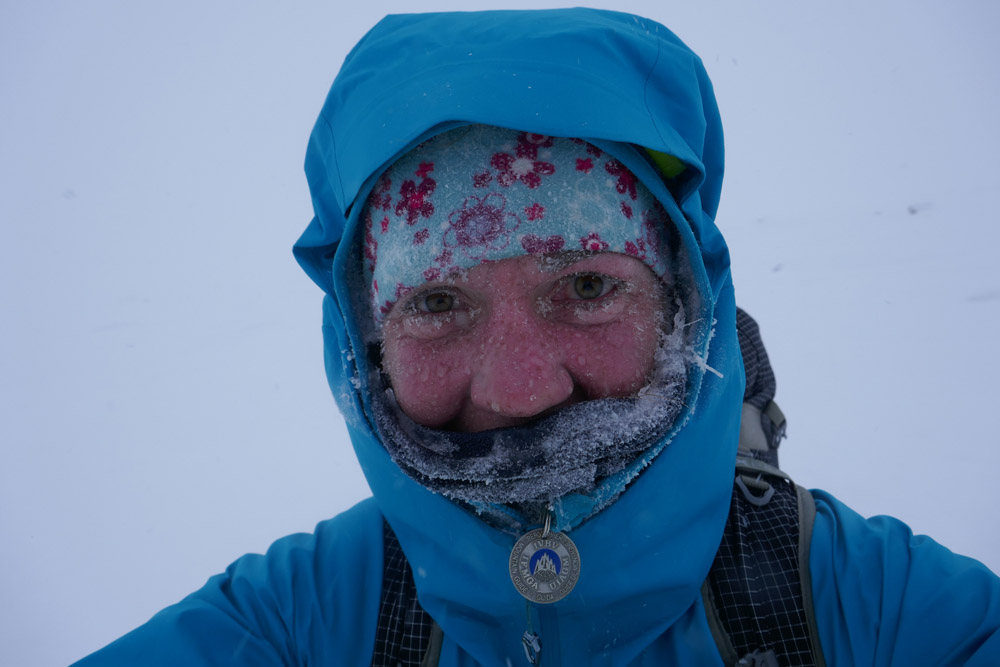
Temperatures dropped as low as -40 degrees C at times
How did you enjoy being on your own for 82 days?
Interesting question because I never really felt alone on the journey. Sure, there were times when I didn’t see anyone else for many days in a row, but I had so much to experience and so much to think about that it was a really special and intense time – it was never empty, I mean, so I didn’t feel alone. I have plenty going on inside my head to keep me entertained and I genuinely really enjoyed the experience. I mean, I love Nordic skiing and skiing across Norway in such amazing conditions was pure joy pretty much most of the time. I also believe that if you aren’t good company for yourself then you’re probably not going to be great company for others either, so being happy with your own company is very important.
Norway is a populated country and every so often I would encounter other people at the huts, or when I dropped down into a town for a resupply. I think when you travel alone you make more out of those chance encounters, you look outward for contact rather than inward to your fellow travel companions. I also think that with modern communications and social media, it’s actually quite hard to cut yourself off from contact. Yes you can choose to, but if you start to feel lonely you can always reach out and have almost instant contact back.
Describe one or two highlights of the traverse?
I had one day skiing from Vingelin to Roros when I saw absolutely no one in the hills. I was skiing on cut tracks covered in a dusting of new snow, with good grip and perfect glide – almost effortless skiing and it was cold, a deep cold which keeps the snow sparkling in the sunlight and where your breath freezes instantly. There was no wind and everything looked so picturesque, white and pristine. I skied for hours with such intense joy and gratitude for being outdoors and part of nature on such a perfect day… I couldn’t stop smiling all day, I felt really fortunate to be alive and to be there and to feel strong and be doing something I loved… it was amazing. There were a lot of amazing days like that, though, so it’s really hard to pick just a few – crossing the Arctic circle was pretty special. Even the tough days had deep satisfaction to them, of decisions either well-made or well-overcome. I honestly can’t wait to go back next year and share some of my knowledge and love of Nordic skiing with others. I’ll be running a BASI Nordic Level 3 Mountain Safety course there at the end of February.
And any particular low points?
Of course, but even those low moments I hold on tight to because I’m satisfied with how I got through them, both mentally and physically in finding a solution. I had one day ‘skiing’ from Lonstua to Balvashyyta north of the Arctic circle which was very tough. I put skiing in inverted commas because it was finding a way on skis through some horrible snow conditions. My body got a real battering that day; the snow was rock hard, old and sculpted, rocks poking out everywhere – basically that region had had much lower snowfalls than normal and the skiing wasn’t enjoyable, in fact in places quite dangerous, but I managed to keep my morale upbeat and find some enjoyment in what was a really difficult day, I’m proud of that.
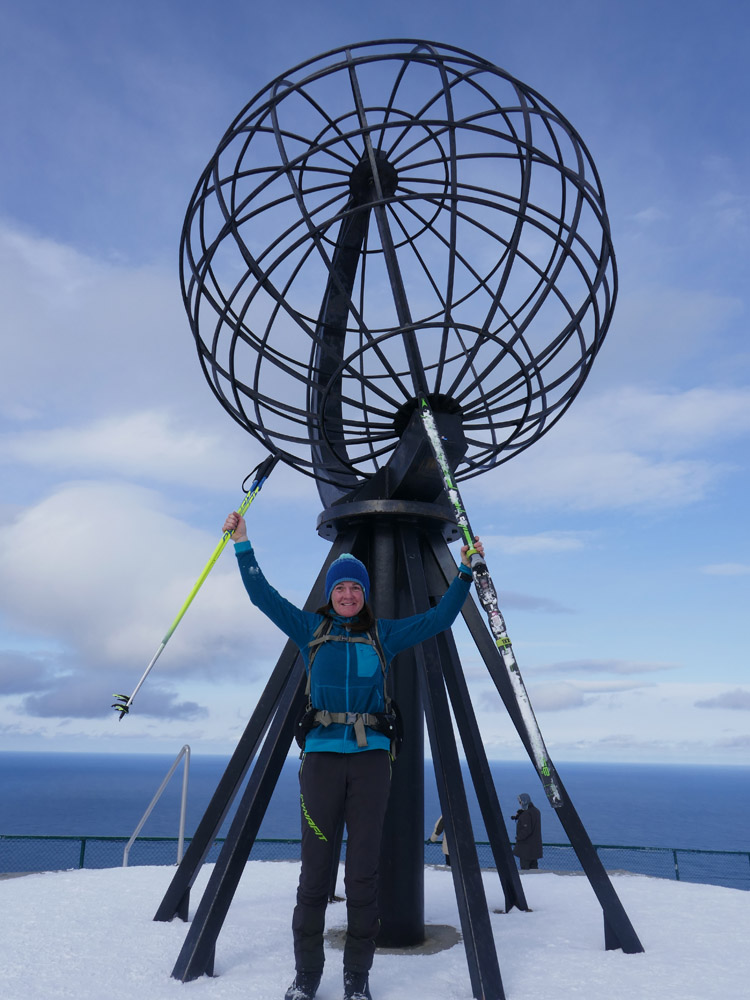
Tanis arrriving at the finish line – Norkapp (North Cape)
What did you learn about Norway during the traverse?
So much..! About new regions I’d never been to before, about the history… it’s a really wonderful country and the people were all friendly and supportive of my journey. I particularly fell in love with the Nord-Trondelag area as the people were really welcoming and the variety of terrain in that section was continually interesting. All my good impressions about the country have been confirmed and I definitely learned that I need to spend more time there!
Where can people donate to your fund?
I am almost at my target and it would be wonderful if I could reach my goal of raising £10,000 to support the Ulysses Trust 25th Anniversary appeal for funds for the Cadets as well as completing Norge Pa Langs! People can donate at https://mydonate.bt.com/fundraisers/tanianoakes1
Tania would like to thanks Salewa and Dynafit for their support.
For more info on the Ulysses Trust, go to: www.ulyssestrust.co.uk


